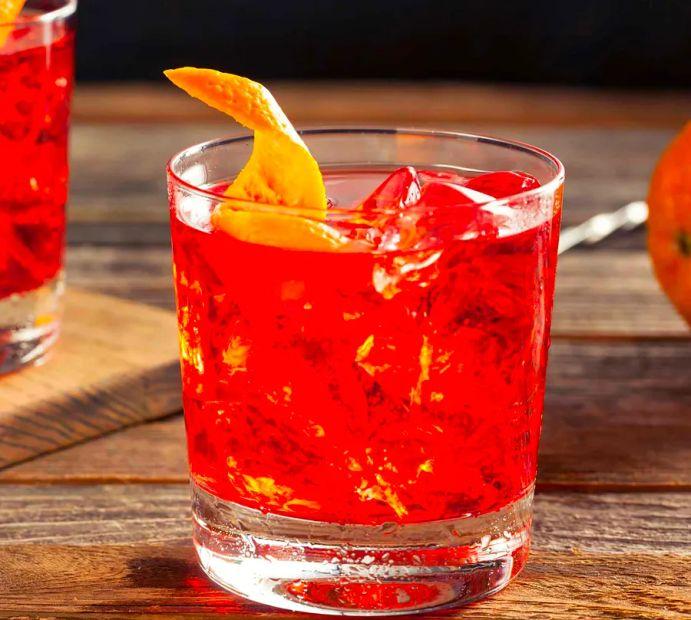What is Campari?

If you've ever enjoyed a Negroni, you've tasted Campari, a renowned Italian aperitif famous for its striking red hue and bitter taste. Though its flavor may be an acquired taste for some, it is a favorite in Italy, where it's traditionally consumed before meals to spark the appetite. But Campari's versatility goes beyond the Negroni—there are plenty of ways to incorporate it into your cocktail repertoire. Keep reading to discover more about this iconic Italian liqueur.
What is Campari?
Campari is an aperitif crafted by the Italian company Gruppo Campari. An aperitif is typically enjoyed before a meal, unlike a digestif, which is consumed afterward to aid digestion. The liqueur was first created in 1860 by Gaspare Campari, and the recipe is still held by Gruppo Campari as a closely guarded secret.
The liqueur is made by infusing alcohol with a blend of bitter herbs, aromatic plants, and fruit, as described by Gruppo Campari. To achieve its signature crimson hue, the company now uses an artificial dye, though historically, Campari's red color came from carmine, a dye derived from female insects. The version sold in the U.S. contains 24% alcohol by volume.
What does Campari taste like?
Campari offers a bold, bitter taste with prominent citrus and spice notes, such as clove and cinnamon. While some believe the bitterness comes from chinotto, a distinctly bitter citrus fruit, this theory remains unproven. The flavor is intense, which can be off-putting for those not used to such strong tastes. However, there's a subtle sweetness that balances out the bitterness, making it more palatable.
Campari vs. Aperol
The main distinction between Campari and Aperol lies in their alcohol content. Campari contains 24% ABV, while Aperol is much lighter at just 11%. Aperol also has a softer, lighter color and a milder flavor profile, making it less bitter and more accessible, especially for those new to bitter drinks. If you're a first-timer, Aperol may be a gentler choice.
Campari substitutes
Since Campari is crafted with a unique blend of ingredients, there isn't an exact substitute. However, if you're looking for an alternative, consider using another bitter aperitif such as one of these options:
- Aperol
- Luxardo Bitter
- Contratto Bitter
- Cappelletti
- Faccio Brutto Aperitivo
- Forthave Red
How to use Campari
Campari can be enjoyed on its own or mixed into cocktails. When adding it to drinks, think of it as a tool to balance and enhance other flavors. For example, a sweet gin-based cocktail with fresh fruit notes can be elevated with a splash of Campari's bitterness. Start with classic Campari cocktails and feel free to get creative with your own variations.
Classic Campari cocktails
Campari became a mainstream favorite in the 1920s, thanks to the creation of the Negroni. While the Negroni is a classic, it's far from the only cocktail that showcases Campari's unique flavor.
- Negroni
- Campari and soda
- Boulevardier
- Americano
How long does Campari last?
Thanks to its alcohol content, an unopened bottle of Campari has a long shelf life, provided it’s stored in a cool, dry place away from direct sunlight. After opening, it can last for about a year if properly resealed.
If you notice a white residue around the cap of an open bottle, don't worry—it's just sugar that has crystallized after pouring. To clean it, simply wipe the top with a damp paper towel.

1

2

3

4

5
Evaluation :
5/5